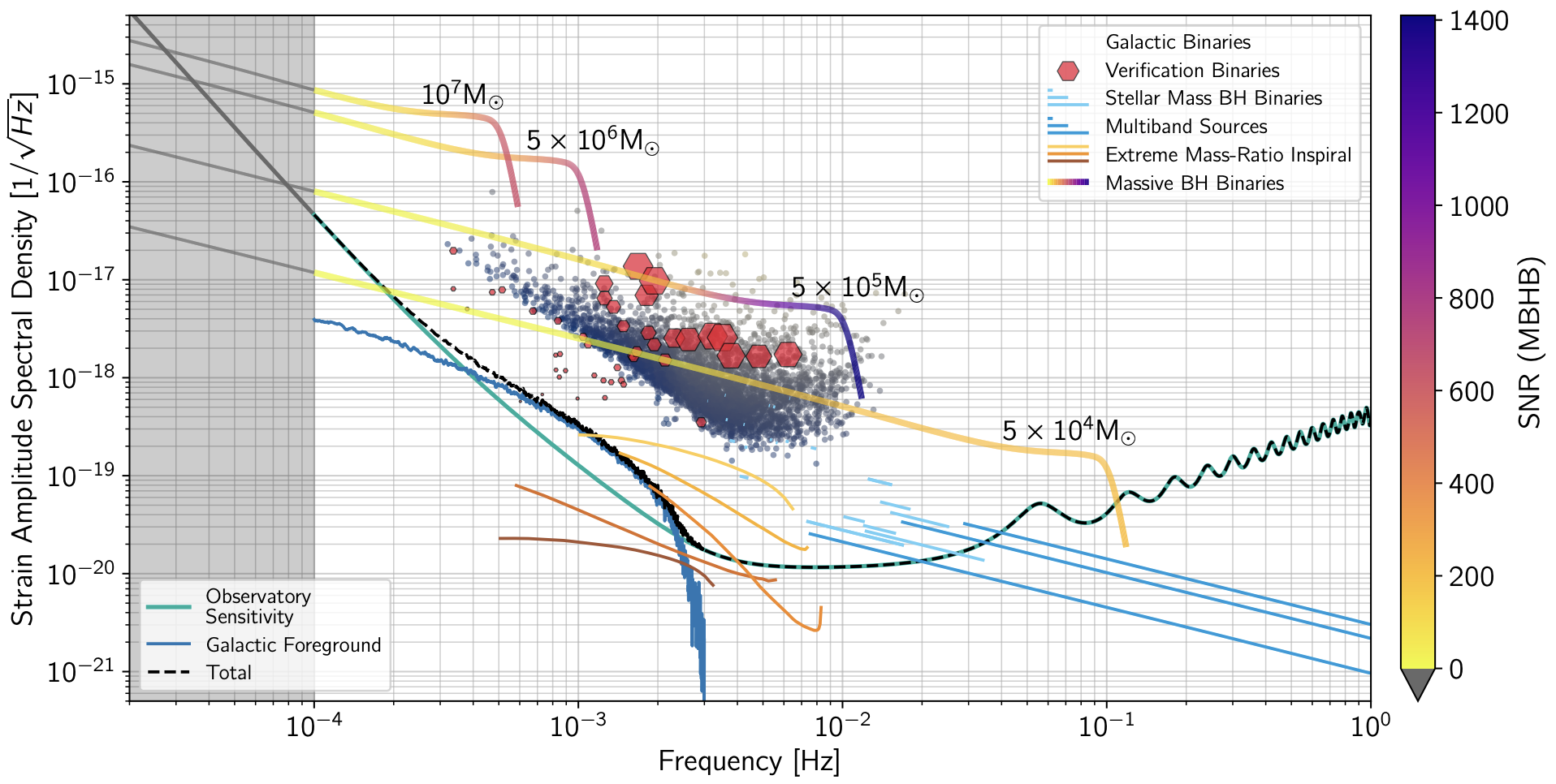NANOGrav Pulsar Timing Arrays
NANOGrav (North American Nanohertz Observatory for Gravitational Waves) is an international collaboration that uses pulsar timing arrays (PTAs) to detect gravitational waves. NANOGrav uses radio telescopes to observe millisecond pulsars, which are highly stable rotating neutron stars. We create timing models for these pulsars to estimate their time of arrival (TOA) at the Earth, and then compare the value to observed TOA. The residuals from this difference can be used for pulsar science as well as for gravitational wave detection. In June 2023, NANOGrav and other PTAs around the world announced evidence for a detection of a stochastic gravitational wave background (GWB). NANOGrav is sensitive to gravitational waves in the nanohertz frequency range between 10-10 - 10-7 Hz.

Improvements to Calculations of Stochastic GWB Sensitivity Curves
After more than 15 years of observations using pulsar timing arrays (PTAs), the North American Nanohertz Observatory for Gravitational Waves (NANOGrav) and other PTA collaborations around the globe have found strong evidence for a stochastic gravitational wave background (GWB). The most probable source of this GWB is a population of inspiraling supermassive black hole binaries (SMBHBs). The yet to be uncovered anisotropy that is expected to arise from the non-uniform distribution of SMBHBs in the sky, as well as the individual parameters of those binaries, remains an interesting problem. Additionally, an anisotropic GWB can be an early harbinger of a continuous wave source from a single SMBHB rather than an isotropic cosmological source. Hasasia is a code developed to construct realistic sensitivity curves for PTAs such as those utilized in NANOGrav. In this study, we detail the methods and enhancements made to Hasasia, specifically focusing on the new ability to account for the anticipated anisotropy in the GWB and its implication for future GWB searches.
NANOGrav Customized Chromatic Noise Models
In 2023, NANOGrav, alongside pulsar timing arrays around the world, reported strong evidence for a stochastic gravitational wave background (GWB). The spectral characterization of this emerging background remains noise model dependent. Dispersion delays in the interstellar medium and interplanetary medium are chromatic (radio-frequency dependent) noise sources which together can be up to 2 orders of magnitude louder than the GWB. In order to better characterize the GWB, we construct multiple sets of customized chromatic noise models for all of the pulsars in the NANOGrav 15yr dataset. We test the significance of multiple noise models for each pulsar and report results which demonstrate the impact of customized chromatic noise models on GWB parameter estimation and significance.

